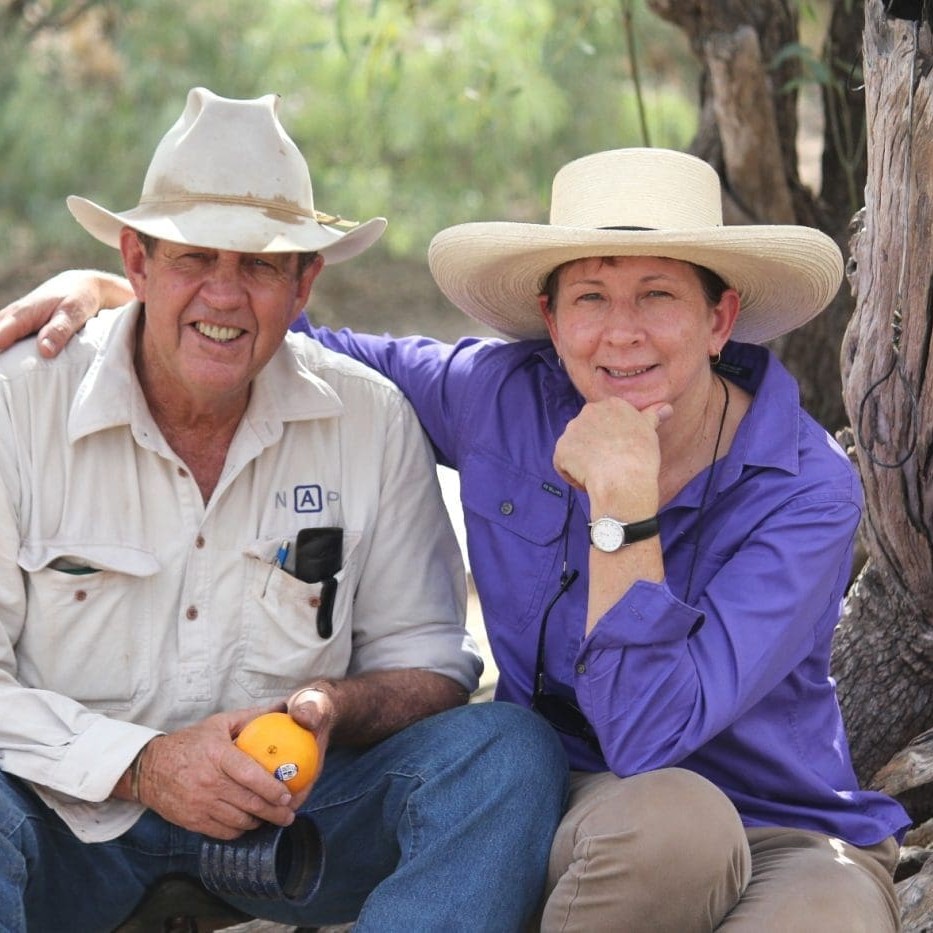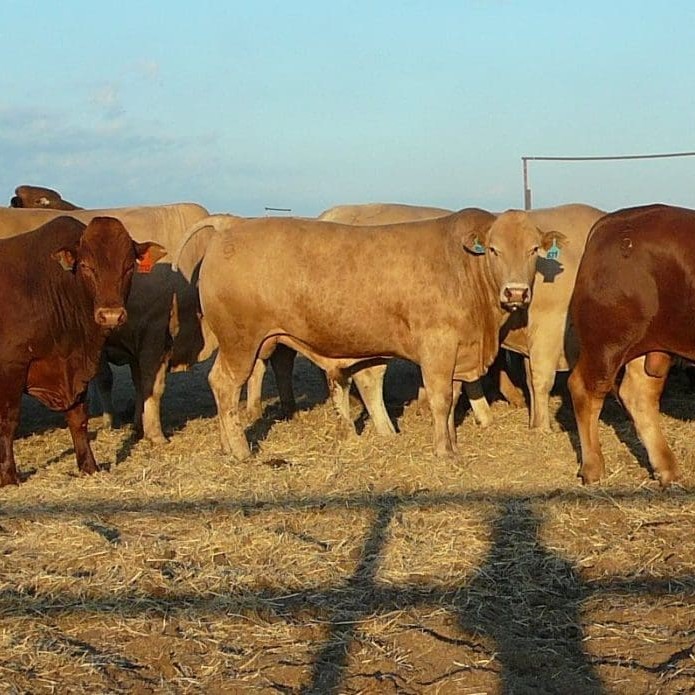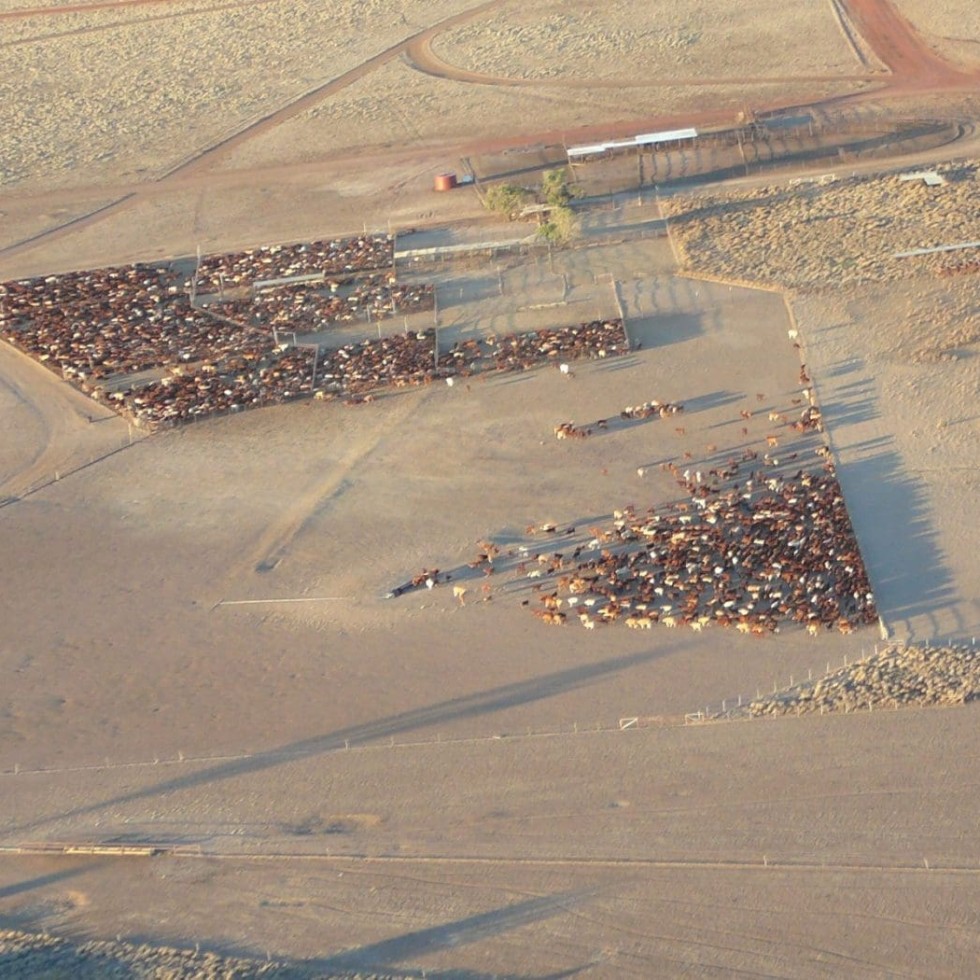
SOFTLY-SPOKEN and unassuming, Ross Peatling has seen a vast gulf of change occur across the northern Australian cattle industry during the near quarter century he has been at the helm of one of the world’s largest cattle stations.
He arrived as manager of the Northern Australian Pastoral Company’s Alexandria station on the Barkly Tableland 23 years ago. Since then, under his management, the station has branded 659,771 calves, and turned off 631,051 head of cattle, mostly to other company growing and finishing properties.
It’s statistics like that that help capture the epic scale of the task at hand in Northern Australia’s extensive cattle industry.
Ross was saluted for his enduring contribution to northern industry affairs at Friday’s NT Cattlemens Association annual conference in Darwin.
He was bestowed with NTCA life membership by NT cattle legend Ian McBean at a gala conference dinner on Friday night, after serving for long periods as NTCA president and representing the northern cattle industry on Cattle Council of Australia.
NTCA president David Warriner paid tribute to Ross’s contribution, describing him as a “great operator who has made an enormous contribution to the Territory pastoral industry.”
“It is a testament to Ross that he has managed Alexandria so well for the past 23 years. He has given tirelessly to the industry and we all wish him well in retirement,” Mr Warriner said.
All those years at the helm of one of the world’s largest cattle properties has given Ross a unique perspective on just how much Australia’s extensive production systems have changed over time.
Although ‘retiring’ is a word he is reluctant to use, he will finish his tenure as manager of NAPCo’s flagship northern calf factory at the end of April.
Ross grew up on a sugar mill estate near Childers in Central Queensland, where his father was the mill accountant. After first thinking about a career in the Army after school, he became one of the foundation students at the newly-built Longreach Pastoral College in 1967, at the recommendation of the then Queensland Premier Jack Pizzey, who was a friend of his parents.
Two years later he took on his first job in the industry, jackarooing on Strathdarr near Longreach with Hooker Pastoral Co, which at that time ran a swag of properties in Queensland, the NT and NSW. He also worked for the Scottish Australian Co near Coonamble before landing a job with Stanbroke at Stradbroke Station, Fort Constantine and Havilah, mostly as head stockman.
Ross took his first manager’s job in 1980 working for Englishman, Miles Barne, at Wondoola in the Gulf. He stayed at Wandoola for eight years, before heading north to spend a year managing Mt Bundy, Elsey and Hodgson Downs in the Adelaide River district in the NT.
In a failed attempt to ‘eliminate boarding school fees’, Ross and his wife Robyn then moved to Inverell for a year, working for Twynam Pastoral Co as livestock coordinator at the company’s Gunnee feedlot.
It was while at Gunnee that the manager’s position at NAPCo’s Alexandria station came up in late 1990, following the retirement of John Ohlson, who had served as manager for the previous ten years.
Alex, on the eastern side of the territory’s Barkly Tableland, is one of Northern Australia’s largest and most iconic grazing properties, having been established by NAPCo in 1876. At a sprawling 16,116sq km, it is the NT’s largest and Australia’s second largest pastoral property. Only Kidman’s Anna Creek, in the desert country, is larger.
“When I took over from John Ohlsen in January, 1991, there were only about 28,000 cattle left on Alex, which was at the end of a long drought,” Ross recalled.
“The country looked shocking when we drove in, and I found myself asking myself why I’d ever wanted to come here. But then it rained, transforming the country, and we’ve been here ever since, loving every minute of it.”
Massive shift in genetics
Genetics and management practices on Alex have changed dramatically under Ross’s watch.
“When I first came here, there were still 15,000 Shorthorn breeders on the books, left over from the days when Shorthorns dominated the Barkly,” he said.
The first Brahman bulls had gone into the herd in 1981, with the remainder F1 Brahman Shorthorn cross.
The heterosis delivered through the F1s was one of the key reasons why NAPCo, driven by board chairman Henry Foster, decided to approach the University of Queensland to seek some support in designing a composite program that would both retain hybrid vigour, and inject the best meat quality, fertility and adaptability traits of different breeds.
 The result was the world’s largest composite breeding program – an extremely adventurous move at the time, given the historical resistance to crossbreds in the north. The composite today includes Shorthorn (5/16), Brahman (3/8), Afrikander (1/8), Charolais (1/8) and Hereford (1/16).
The result was the world’s largest composite breeding program – an extremely adventurous move at the time, given the historical resistance to crossbreds in the north. The composite today includes Shorthorn (5/16), Brahman (3/8), Afrikander (1/8), Charolais (1/8) and Hereford (1/16).
“It was a very brave step, because it went right against the conventions being followed by the northern pastoral industry in that era,” Ross said. “People considered us to be quite silly for even trying it on. We were changing the whole scope of a well-established, very large territory breeding herd,” he said.
After the late 1990s, however, people saw that the Alex herd was still going strong, and the whole ‘coat colour bias thing’ started to die away.
Ross said the transition never bothered him, personally, because he had worked widely with crossbred cattle earlier in his career, and had confidence in the outcome. “It struck me as being a good thing to try to manage, on such a large scale, and it has just continued to grow and develop.”
Bull selection on Alex has gone from simply going through mustering rounds within the stud herds and making visual selections on young bulls, to a stage where daily weightgains are measured on calves, and 1200 stud cows are fully-recorded on Herdmaster.
“We’ve built up a huge database over the years, sufficient to create our own EBVs for desirable traits,” Ross said.
Alex’s stud herd has been closed since he arrived back in 1991, with all the bull replacements bred on-site, using an elite bull-breeding cow herd of 1200 dams, run in 300-cow stud herds. All are computer-recorded with birthweights and birth dates, plus DNA sampling for parentage. Another 2000 cows are used in a bull-multiplier herd.
“Nucleus herd cattle now are drafted on genomics and objective data,” Ross said. We are just light years away from where we started.”
Even with 2013 being the driest year recorded since Ross and Robyn arrived at Alex 23 years ago, the adaptation present in the composite cattle means they remained in reasonable shape right through to the end of the year. Last year saw only nine inches in the gauge, on an average annual total of 15 inches.
“Even on the back of a near-record dry 2013 year, and a dry 2012, the cattle still looked quite good at the end of the year, and we managed to carry all our breeder numbers through” he said.
Apart from genetics, Ross listed a catalogue of other changes he has witnessed at Alex and across the region in his time in the territory:
Carrying capacity
Development of country to lift sustainable carrying capacity through the provision of more waters and strategic fencing was one of the big changes he’d witnessed in the past 23 years.
When he first arrived in 1991, Alex had the capacity to run 28,000-30,000 breeders, compared with 54,000 on the books today, on the same amount of country.
 That’s due to a combination of a lot of factors, ranging from spreading grazing distribution through more waters, to pulling calves off earlier for transfer to NAPCo properties further south, nutritional support, preg-testing, and use of genetics with greater fertility potential.
That’s due to a combination of a lot of factors, ranging from spreading grazing distribution through more waters, to pulling calves off earlier for transfer to NAPCo properties further south, nutritional support, preg-testing, and use of genetics with greater fertility potential.
“We could always see that the country had a lot more potential to carry more cattle, given some investment in water development. I think it was 1993 that I put my first submission in to head office seeking to spend some money to sink more bores – mainly, then to try to drought-proof the place, rather than increase breeder numbers, but the two went hand-in-hand.”
“It wasn’t uncommon then to drill bores in a drought, simply to try to open up a bit more country. It wasn’t about lifting productivity.”
Around 2004, NAPCo undertook a program designed to achieve a maximum 10km grazing radius around watering points, which saw an additional 66 bores added. Alex now carries almost 170 sub-artesian bores, plus pump-outs – perhaps the most of any single grazing property in Australia.
Asked about the state the country was in now, compared to when he arrived a quarter century ago, Ross said environmentally, grazing land on Alex was demonstrably in better shape today than what it was when he first arrived.
“Despite the fact we’re running a lot more stock today, cattle are more evenly distributed because of the extra waters, and people are a lot more conscious of grazing pressure and stocking density on land management.
“When I first came here it was basically a mono-culture of Flinders grass. It’s now coming back to a better balance between Mitchell and Flinders, as it originally would have been.”
“The beauty of the provision of extra waters is that we can still spell grazing areas, even within the same paddock, simply by turning waters off in one sector, and on in another. It’s like virtual fencing.”
A big drought event in 1994 was one of the catalysts for management change across the property.
Prior to that point, cattle were grown out on Alex to bullock weights, but a drought forced a large shift of young cattle down onto NAPCo’s Channel country holdings, and the process of removing young cattle to better inside country has happened ever since.
People management
Asked about the challenges, staff-wise, in running a large northern cattle operation today, Ross admitted it had become increasingly difficult, because fewer young employees were tending to stay-on to progress through the staff ranks.
Without having records at his fingertips, he suspected the number of staff on Alex was considerably larger back in 1992 than it is today. Each of the four stock camps back then had eight or nine people in them; the station ran three mechanics back then, compared with only one now.
“Most of our head stockmen today have been promoted through the system. But there is a tendency, generally, for a bunch of great young people to turn up every year to do a season, but most of them tend to stay a year or two at most, before moving on. It’s a common problem across the north,” Ross said.
Today as well as the main headquarters on Alex which supports three head-stockmen, the two outstations of Gallipoli and Soudan both carry an overseer and a head-stockman.
“They, together with a core of some very, very good old fellas, provide the experience and knowledge-base around which these younger, less-experienced staff work,” he said.
The northern industry had tended to move very rapidly in some areas, but quite slowly in others, Ross said. Animal husbandry was one of the areas of rapid change.
“When I first started in cattle work, weaning and dehorning was unheard of,” he said. “Calves self-weaned, and you’d simply muster and cut-out the fat bullocks. All that has changed dramatically.”
Arguably, the thing that had changed the whole northern industry more than any other had been roadtrains. The ability to shift large numbers of cattle rapidly, when it became necessary due to seasons or just the way pastoral companies operate their supply chains, had become a huge advantage, Ross said.
Additionally, the fortunate position of having NAPCo’s company feedlot on the Darling Downs had made an ‘unbelievable’ difference during the very tough 2013 year, he said.
“All our cattle that wouldn’t dress 220kg last year went to the feedlot to go through a grain-assisted program. All our weaner heifers from Alex also went straight to the feedlot in 1800-head lots, so it was just magic in a very dry year,” he said.
While there had been some rapid progress in areas discussed above like animal husbandry and grazing land management, progress in other areas like genetics, the industry response had been much slower.
“There’s still so much potential for further development in genetics and selection for traits in the north. Lots of people in the northern industry still buy their bulls on eyesight alone, without ever looking at a figure,” Ross said.
Industry representation
Ross said he greatly enjoyed his representative roles in industry affairs over the years, as a welcome change to the day-to-day challenges of running Alex.
He spent a total of eight years on Cattle Council of Australia, representing the northern industry and chairing CCA’s animal welfare taskforce for a lengthy period. He sat under various CCA presidents including Keith Adams, Greg Brown and Andrew Ogilvie.
“I think the NTCA has always done a pretty good job, because it is single species and has a common objective with markets,” he said.
- Ross and his wife Robyn – herself the daughter of legendary Rocklands Station manager Ray Jansen – finish up at Alex on April 30. They will retire near Warwick on the Darling Downs, but Ross hopes to continue to engage with the industry through some part-time consultancy work.



HAVE YOUR SAY